On Directing Andrea Dworkin's Aftermath
Aftermath by feminist icon Andrea Dworkin (author of Intercourse, Pornography, Scapegoat) is based on an unpublished autobiographical manuscript she wrote in 1999 after being drug-raped in Paris. She showed it to no one. John Stoltenberg, her life partner of 31 years, discovered it on her computer after her death in 2005. Recognizing that “the text read like an extended dramatic monologue or monodrama,” Stoltenberg as Dworkin’s literary executor asked Adam Thorburn, a playwright friend of theirs, to edit the manuscript into a solo theatre piece. Thorburn directed a staged reading of the piece that was performed seven times in New York City in 2014 starring Maria Silverman.
The Waterworks Company in Montréal, Canada, presented a full staging of Aftermath in nine performances September 17–27, 2015. The production starred Helena Levitt and was co-directed by Waterworks founders Tracey Houston and Rob Langford. This essay describes their experience working on Aftermath. Immediately following is Helena Levitt’s “On Performing Andrea Dworkin’s Aftermath.”
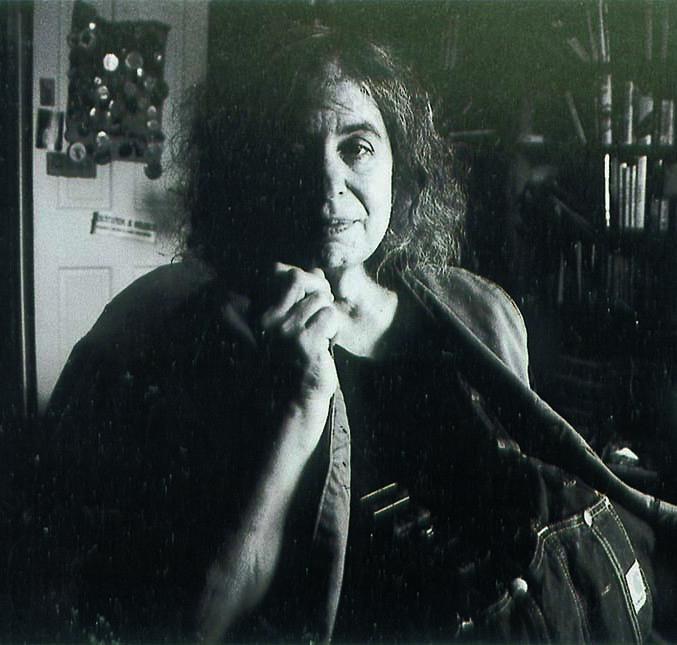
Rob found out about a staged reading of Aftermath in New York City in October 2014, and approached John Stoltenberg about the possibility of a full staging. John shared the script with us. We knew that the text had been edited down to 90 minutes from what was originally a much longer essay, so the question in our minds was "Is it drama?" As soon as we both read it, we were convinced it was indeed.
The power of Aftermath is in the clarity and deep self-realization of Andrea's writing. Our central goal was to avoid anything that watered down the play's uncomfortable directness; we didn't want to fall back on anything that would make the audience feel ‘safe.’
We felt that the best way to approach the project was as a directorial partnership, which would be a continuation of our own ongoing conversation about feminism. In our working together as co-directors, every intention and meaning, however minute, had to be up for discussion.
The power of Aftermath is in the clarity and deep self-realization of Andrea's writing. Our central goal was to avoid anything that watered down the play's uncomfortable directness; we didn't want to fall back on anything that would make the audience feel "safe."
During rehearsal, we were on our feet along with Helena Levitt much of the time, standing in a large triangle. We used this formation to simulate the span of a room-sized audience. This forced Helena to look back and forth between us, dividing her focus, so she could develop an instinct for how long she should stay with a single audience member before moving on.
In this formation, we reacted and engaged with Helena. We let ourselves literally draw closer as she spoke, encouraging her to "tell us" the story and not play to a "middle distance."
Aftermath has no stage directions—it’s all Andrea’s words—so we had the freedom to try out design ideas in rehearsal. We had two design principles in mind from the beginning: the setting should not be in a literal place, and nothing in the set should stand in the way of Helena/Andrea speaking to the audience. We felt any literalistic setting (such as a writer's desk) would turn the play into a museum exhibit, giving the audience a distraction from the urgency and immediacy of the story, a place to hide.
Our central design element was a stepladder with a platform. This idea came out of a rehearsal exercise in which we asked Helena to stand on a stepladder that happened to be in our rehearsal room and to speak as if she were stuck somewhere high up asking for help from a crowd gathered below. That image conveyed the urgency and immediacy of the script so well that the three of us couldn't let go of it.
Eventually the ladder evolved into a touchpoint for many aspects of Andrea's life and work, symbolizing her ambition as a writer, her public platform as an advocate, the struggle she put into everything, her independence, her ambition. We jokingly told Helena that the ladder was her co-star.
Aside from the ladder, the stage was scattered with stacks of books, works of literature and history, classics, and a few feminist works. We felt that Andrea saw herself as a writer first and an activist second. She wanted to be a writer in the “big leagues”—a Dostoyevsky or Tolstoy.
Her imagination was populated with books, and the stacks of books positioned around the base of the ladder became the workshop of her mind. The ladder, like her customary overalls, conveyed an image of someone who saw writing as real get-your-hands-dirty work.
John Stoltenberg gave us permission, even encouragement, to be as inventive as we liked with the casting, suggesting that we could even work the piece with multiple actors. The protagonist didn't have to "be" Andrea Dworkin, but it became apparent to us that the character spoke from a very specific place, moment in history, and experience. We realized the character was not an "everywoman." Paradoxically, to be universal we had to be specific. We were delighted at how the character was immediately recognizable and iconic once the voice and the look started to become Andrea's.
The play takes the form of a suicide note. The last line is "Please let me die, now." In performance, we were surprised to learn that people familiar with Andrea Dworkin did not necessarily know that she lived on for six years after the piece was written. People needed to know that Andrea didn't kill herself. We thought we had addressed this with our choice of an oblique ending, where the character waits a moment for God to strike her down, and then, realizing that isn't happening, sighs, climbs down off the ladder, and walks offstage.
This turned out to be upsetting for some. The play depicts a hero of theirs in a moment of seemingly final desolation. While seeing suicidal thoughts externalized on stage was cathartic for some, for others it was disillusioning. Perhaps audiences have been groomed for endings that are redemptive and “teachable”?
We felt that the oblique ending for Aftermath was redemptive in its way—it ends on a possibility of life. But the play is bleak. As the run progressed, and we received feedback from audience members, we put up a notice advising that the show depicts the nadir of Dworkin's experience and not her recovery. If you prepare a warning about the content of this play, it's worth knowing that the unresolved suicidal thoughts, not only the rape, can be a trigger.
Aftermath's power is in the delivery of the facts. Andrea is analytical, even in the whirlwind of emotion. We told Helena to “check in” with the audience, to wait for them to be onside, gauge their reactions, in order to respect the pace and dynamics of the script. We reminded Helena to take her time, and take advantage of the freedom that comes of being alone onstage, the freedom to set her own pace.
Rhythm, pace, and even meter are very important in this play. It needs to be analyzed the same way a classical or Shakespearean text is. We read the text out loud, sought out antitheses within and between sentences, and identified powerful words that anchored a phrase, or clinched a point.
We spent at least fifteen hours of rehearsal time on word-by-word table work, not counting Helena's own exhaustive research. Andrea Dworkin crafted all her work, even her most personal “cris de coeur," precisely, skillfully, and with an awareness of the whole inheritance of oratorical, poetic, and narrative tricks. This needs to be respected.
A "Method" approach won't work on its own. We realized that if the right kind of analysis wasn't applied, the rhythms would be off. The piece would tick-tock like a clock and fall flat, no matter how skillfully emotions and intentions were layered. An audience can't withstand reaching top emotional intensity more than two or three times during the show—it wears thin.
This play is awkward, uncomfortably direct, objective where it should be emotional, and emotional where one would expect it to be objective. It is every bit as intimate as hearing the same words from your closest friend. This play is infused with Andrea's spirit from start to finish; the challenge is to honor it without diluting the substance.
***
On Performing Andrea Dworkin’s Aftermath
By Helena Levitt
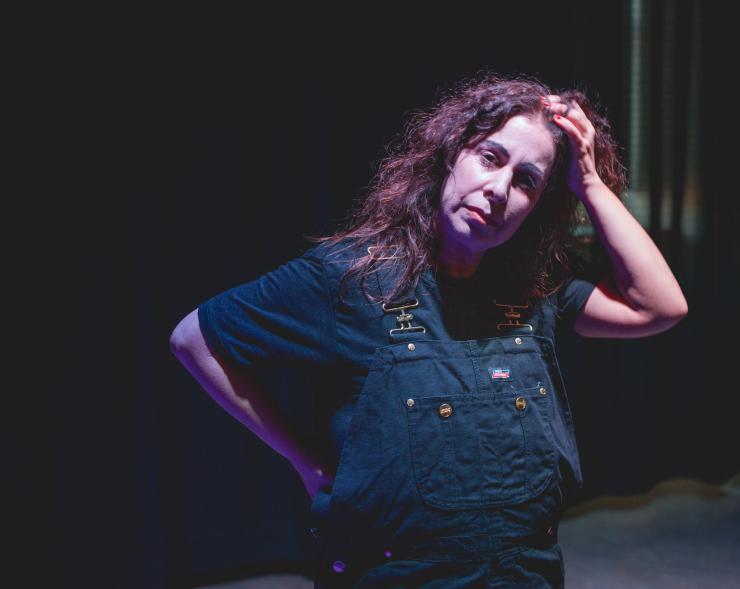
When first given the script to read, I was overwhelmed. The first reaction I had was “whoa.” I wondered how I would ever be able to play this part. It was heavy, intense, bold, daring, direct, honest, intimate, compelling, and most of all, important. I couldn’t believe that any human could actually live through this, that such a horrific act could ever have happened. How could a woman be raped more than once, live through a marriage where she was beaten, spend her life advocating for women, and then be drug-raped herself when she had finally reached some peace in her life. How was I going to take this real-life story, find a way to connect, when all of these atrocities are so foreign to me, and be respectful enough to her memory by “acting” her story? How would I be able to make it authentic, how would the living people in her world feel about this enactment? I was terrified. The questions continued. How would an audience feel about watching this for 90 minutes, about watching me for 90 minutes?
I wondered how I would ever be able to play this part. It was heavy, intense, bold, daring, direct, honest, intimate, compelling, and most of all, important.
And then I told my husband I was having second thoughts. I was terrified. I didn’t know if I could do it justice. It was too important. I would have to be so vulnerable. He quickly helped me to realize that what I most feared, needed to be reframed as my biggest challenge. That I am an actor, that I feel for human beings, that I study them, that I am a woman, that I am a daughter, a wife, and that I will draw on all of my experiences, relationships, training, commitment, and instincts and approach this text as an opportunity of a lifetime. I would trust it all, trust the script, trust the directors (as I was blessed with two), and give it everything I had. And so the process and journey of playing Andrea Dworkin began.
I knew that in order to really connect and immerse myself in this role, I could not for one second worry about the lines. They had to be part of me in a very secure way. I had to be free of that concern right away, so I literally made a schedule, broke down the text into sections, and learned the lines as quickly as I could. It took me three weeks until I was able to really say I was off book. As an actor, for me, it is extremely important to get that out of the way so that exploration of the character can really begin. I realized early on that there were very natural and instinctual rhythms in the text. Andrea, without ever being aware that her words would ever land in an actor’s hands, was guiding me through the memorization. I couldn’t help but find myself naturally finding a voice and speech delivery that was not my own. I heard it, I felt it, and I was able to tune into that voice as a gauge for when I felt she was with me. I have no other way of explaining it, or describing it, other than, Andrea’s voice lived inside me, and her own words unlocked that voice. I think other actors can understand this. When we just connect to a character we are playing in such a way that it actually feels part of who we are.
I began to research. Google was a very active part of this process. I didn’t know who Andrea was. I read a lot. I read about her, her life, her stories. I read about her relationships, her hardships, her beliefs. I read some, though not all of her books. I watched a few YouTube videos and listened to her speeches. There was so much information at my fingertips that I didn’t know where to start, or when to stop. I’d never had so much information available to my process, and although it was exceptionally helpful, at a certain point I knew I couldn’t read it all, so I had to make some choices. I made notes. I highlighted things in the script that I felt needed further research. I read about the different artists and poets that Andrea made references to in the text. I then realized that there were underlining psychological issues in the script that needed more exploration. Andrea’s cycle of violence was something that I felt deserved further research. I consulted two highly skilled therapists, and we discussed the cycle of violence, attachment theory, abandonment issues, trust, self-respect, physical abuse, and suicide. There was so much that Andrea shared and alluded to in the text that was so profound. I knew I needed to approach the text within a psychological framework in order for the subtext to live within the story. I watched documentaries about women who had been raped, about prostitution, domestic violence, and post-traumatic stress disorder. Again Google and YouTube were very helpful.
Then I was fortunate enough to meet “Paul” (the name Andrea gave her life partner in the text). He was such an important part of the story and Andrea’s life that having a real sense of him was a layer I was able to add to the role. I appreciated that so much. His gentle energy allowed me to ask some direct questions about Andrea, their relationship, and the relationships she had with her mother, father, her connection to her faith and to her ex-husband. He helped flesh out some details about the text that provided concrete answers that helped create a more realistic understanding of her story. I wanted to get those details accurate. The name of her dog, the color of its fur. I wanted the visual, so the audience could see it too.
I went to Paris. It was a lucky part of my process. It wasn’t necessary, but we were planning a holiday and Paris was already on the short list before I was cast. My husband was a trooper. I went to the museums to see the works of the artists Andrea talked about in the script. I tasted a Kir Royale and got a feel for the city that she loved so deeply. It added yet another layer to my process.
I then began rehearsals. My directors really trusted that the script, that Andrea, would naturally lead us to a performance. We did a lot of table work. We talked at great lengths about Andrea, feminism, politics, rape, trauma, recovery, perseverance, and internal struggles. We looked for rhythms and beats within the script. In searching for the key words in the script, we found that all the words were specifically chosen by Andrea as key words. She had been so descriptive, so precise, so honest in her storytelling that it helped us all create the natural flow of the piece. We improvised, role-played, and continuously discovered new elements. We were a team. All of us: John, Adam, Tracey, Rob, myself, and Andrea. This collaboration gave life to the story.
I am hopeful that my process will be helpful to any actor who is lucky enough to be cast in Aftermath. It needs sensitivity, patience, time, and a commitment for authenticity. It needs trust. It really has been a creative process that I will always feel so blessed to have experienced.
The Waterworks Company production of Aftermath will tour to Toronto September 22–24, 2016, and to Ottawa October 14–16, 2016.
The Toronto run will be at the Aki Studio Theatre (Native Earth Performing Arts), at 585 Dundas St. E. #250. The run opens at 8pm Thursday, September 22, with two shows each (4pm and 8pm) on Friday the 23rd and Saturday the 24th. Tickets will be available through the venue (http://www.nativeearth.ca/boxoffice/). Prices are $25 and $18 for students, seniors, and arts workers. The Friday 4pm matinee will be priced specially at $15 for all seats.
The Ottawa run will be at the Avalon Studio, 738a Bank Street (at 2nd Avenue), in the Glebe. Shows will be at 8pm on Friday, Saturday, and Sunday. Tickets for the Ottawa shows will be available via the Waterworks Company's website, waterworksmontreal.com, at $20 for all seats.
For more information about Aftermath, contact John Stoltenberg at [email protected].



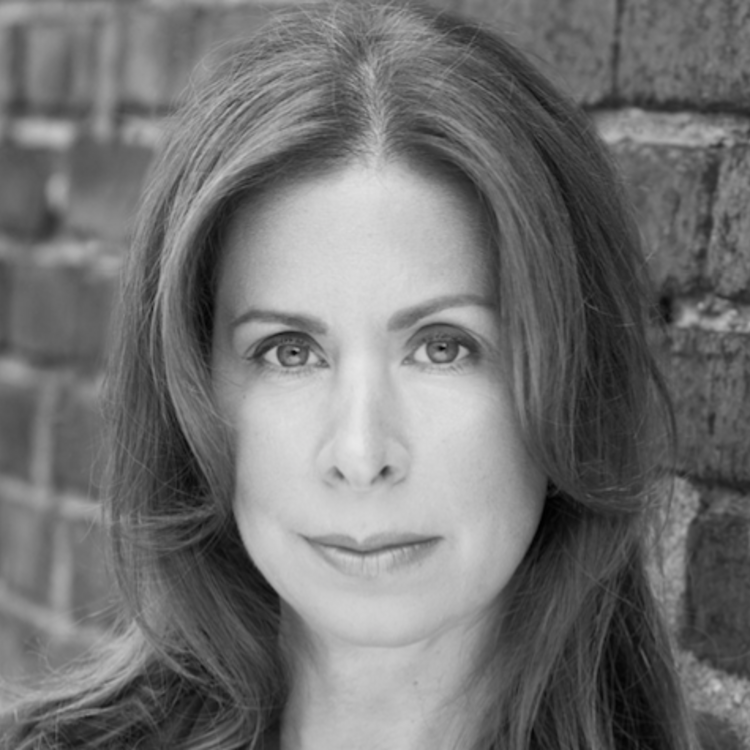
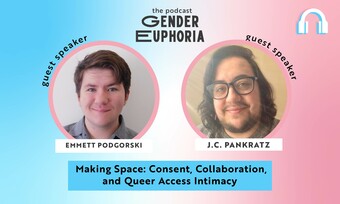



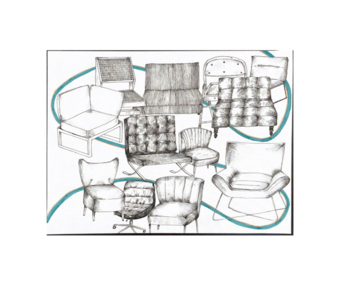






Comments
The article is just the start of the conversation—we want to know what you think about this subject, too! HowlRound is a space for knowledge-sharing, and we welcome spirited, thoughtful, and on-topic dialogue. Find our full comments policy here
I become deeply immersed in the work of Andea Dworkin in Law School. One of the most influential feminist writers of all time. I hope more audiences see this work.